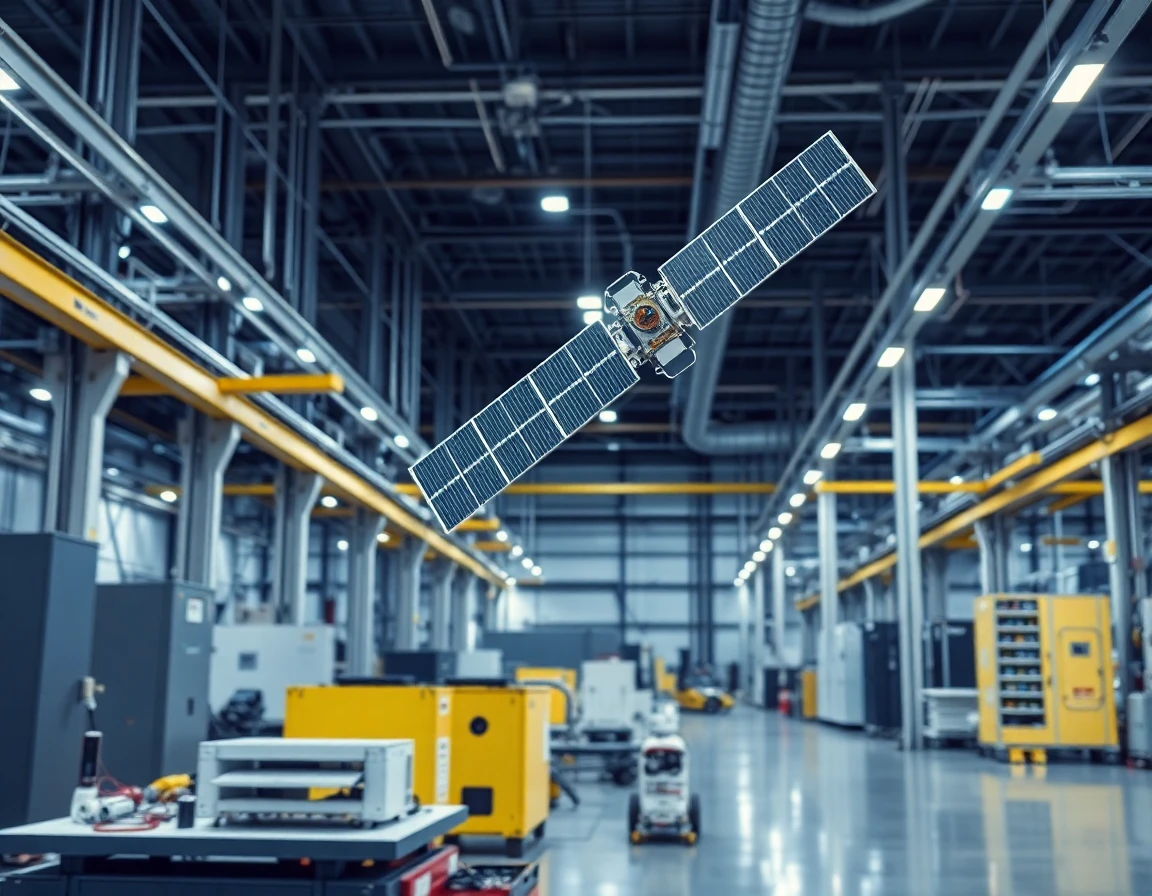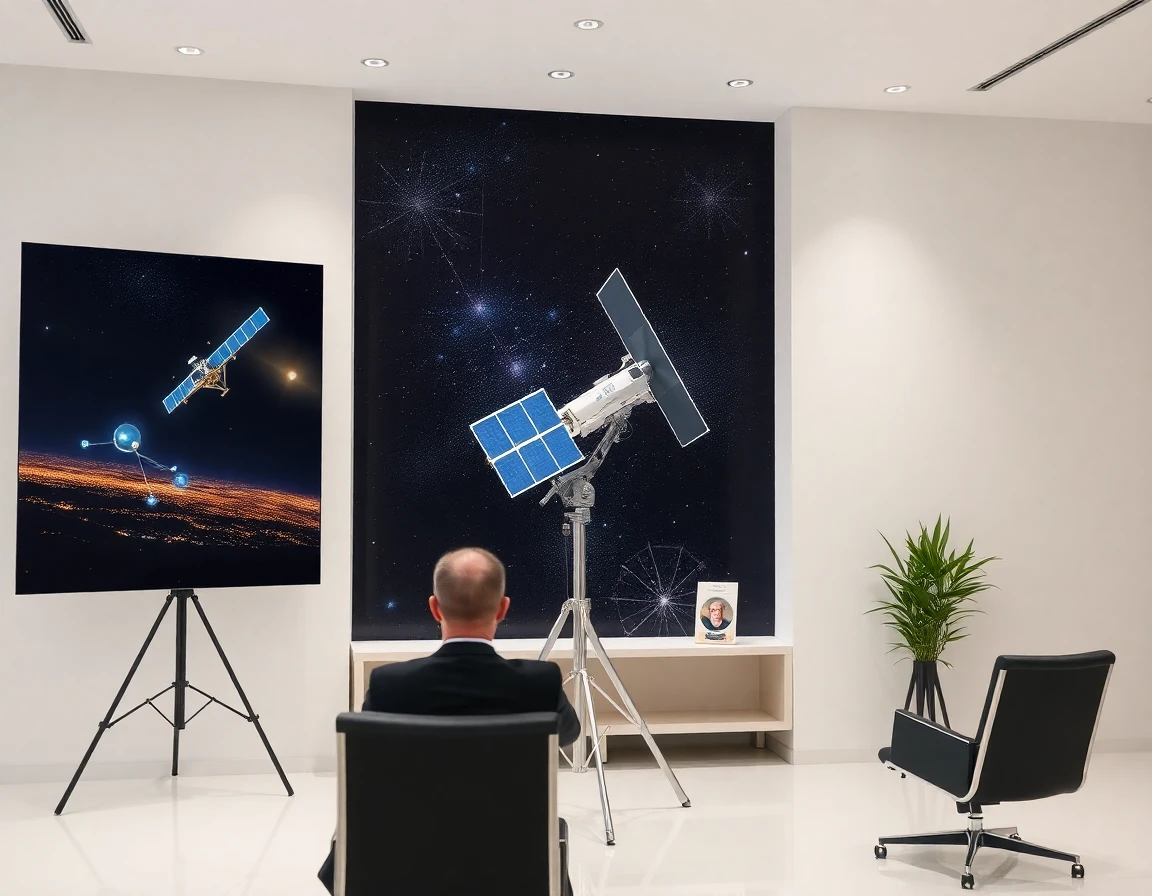As the demand for global communications grows, satellite constellations are emerging as a game-changer, providing unprecedented internet coverage and connectivity solutions. Companies like SpaceX, OneWeb, and Amazon have initiated ambitious projects to deploy large networks of low Earth orbit (LEO) satellites that promise to bridge the digital divide and enhance global communications.
What is a Satellite Constellation?
A satellite constellation refers to a group of satellites working in concert to provide coverage over a large area. Unlike traditional satellite communication systems that rely on a few geostationary satellites, these constellations consist of hundreds or even thousands of satellites orbiting the Earth at lower altitudes. This configuration allows for reduced latency and improved bandwidth, making them ideal for internet services.
Technical Specifications
Typically, satellites in a constellation are positioned at altitudes ranging from 500 to 2,000 kilometers. For example, SpaceX’s Starlink satellites operate in a low Earth orbit (LEO) at around 550 kilometers. Each satellite is equipped with advanced antennas and communication technology that facilitate high-speed data transfer.
According to a recent report by the Federal Communications Commission (FCC), satellite constellations can potentially deliver internet speeds exceeding 1 Gbps with latencies as low as 20-30 milliseconds, which is comparable to traditional fiber-optic networks.
Key Players in Satellite Constellation Development
SpaceX’s Starlink
SpaceX’s Starlink is perhaps the most recognized name in satellite constellations, with plans to deploy over 12,000 satellites in the coming years. Elon Musk, CEO of SpaceX, stated, “Starlink aims to provide internet access to underserved regions of the world, and we are committed to making connectivity a universal right.”
OneWeb
OneWeb is another major player, with a goal of launching 648 satellites to provide global internet coverage. The company recently secured $1 billion in funding to accelerate its launch schedule, focusing on rural and remote areas. Neil Masterson, CEO of OneWeb, emphasized, “Our mission is to connect the unconnected and create a more equitable world.”
Amazon’s Project Kuiper
Amazon is also entering the satellite constellation arena with Project Kuiper, which aims to deploy 3,236 satellites. The project is still in its early stages but represents a significant investment in satellite technology. “We believe Project Kuiper will help address the critical need for affordable broadband services in underserved communities,” said Dave Limp, Senior Vice President of Amazon.
Industry Context and Analysis
The proliferation of satellite constellations is driven by the increasing demand for high-speed internet, particularly in remote and rural areas where traditional broadband infrastructure is lacking. According to the International Telecommunication Union (ITU), approximately 3.7 billion people worldwide still lack internet access, making satellite constellations vital in achieving universal connectivity.
Moreover, the ongoing COVID-19 pandemic has underscored the importance of reliable internet access for remote work, education, and telehealth services. As such, satellite communication has gained traction as a viable solution to meet these growing needs.
Potential Impacts on Global Communications
The impact of satellite constellations on global communications is expected to be profound. Here are a few key areas in which these networks could make a difference:
Bridging the Digital Divide
Satellite constellations could deliver internet access to the most disadvantaged populations and regions, enabling them to participate in the digital economy. This connectivity can lead to improved educational opportunities, healthcare services, and economic development.
Enhancing Disaster Response
In times of natural disasters, traditional communication infrastructure often fails. Satellite communication systems can provide critical connectivity when terrestrial networks are down, enabling emergency responders to coordinate efforts effectively.
Supporting IoT and Smart Cities
The rise of the Internet of Things (IoT) and smart city initiatives will also benefit from satellite constellations. With billions of devices expected to be connected to the internet in the coming years, satellite networks can provide the necessary infrastructure to support these technologies, particularly in remote areas.
Future Developments in Satellite Constellations
As technology advances, the future of satellite constellations looks promising. Innovations in satellite design, propulsion systems, and communication technologies are expected to improve the capabilities and efficiencies of these networks.
For instance, companies are exploring the use of high-throughput satellites (HTS) that can dramatically increase bandwidth and lower costs. Additionally, advancements in artificial intelligence (AI) are being integrated into satellite operations, enabling real-time data analysis and dynamic resource allocation.
Regulatory Challenges
Despite the exciting potential, the rapid growth of satellite constellations also presents regulatory challenges. Issues related to space debris management, frequency allocation, and international cooperation must be addressed to ensure the long-term sustainability of these endeavors.
Conclusion
The expansion of satellite constellations represents a significant leap forward in global communications and internet coverage. With key players like SpaceX, OneWeb, and Amazon leading the charge, the landscape of connectivity is set to transform dramatically. As these technologies continue to evolve, they promise to bring about a future where high-speed internet is accessible to all, revolutionizing how we communicate, learn, and interact with the world.
In summary, satellite constellations are not just a technological advancement; they are a catalyst for social change and economic development. As we look ahead, the possibilities for innovation and connectivity are limitless, paving the way for a more connected and informed global society.



